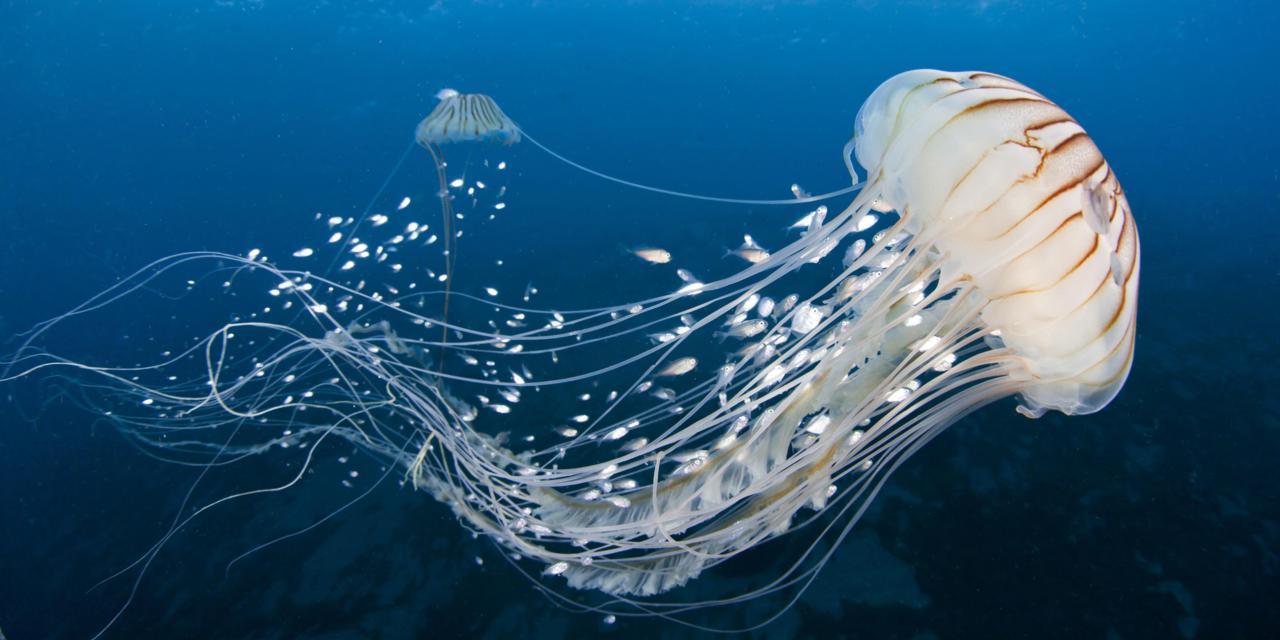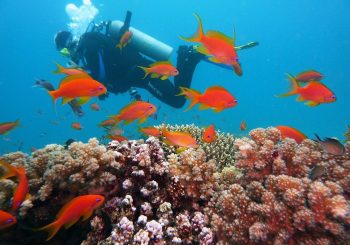Egypt’s North Coast has witnessed a significant growth in the number of Jellyfish on the coast of the Mediterranean sea, leaving the holidayers who took to the Coastal City for their summer vacation wondering about the reasons behind the sudden upsurge.
The phenomenon of the increased jellies is not new this year, nonetheless, the increased number is deemed unprecedented.
Egypt’s Ministry of Environment released a statement in response to the controversy caused by the appearance of Jellies.
“It’s an annual phenomenon that happens every year when the temperature starts to rise. The upsurge in the number of Jellyfish is due to the significant increase of temperature this year compared to last year. Also, because fishermen have been actively hunting sea turtles in the Mediterranean which, in essence, feed on Jellyfish, causing an ecological disturbance,” read the statement.
Several narratives have surfaced when the Jellies have been spotted abundantly on the coast of the Mediterranean. Some claimed that the new Suez Canal resulted in a disturbance and the movement of Jellies from the Red Sea to the Mediterranean.
However, Egyptian Streets spoke to Marine Biologist Selim El-Kafafy regarding the widely-discussed phenomenon.
El-Kafafy said that there are multiple factors that potentially contributed to the increase in the number of Jellyfish. However, the exact reason will need lots of research and studies to be held. El-Kafafy discussed the factors that may have resulted in the phenomenon.
“Jellyfish move according to the water current, they don’t really swim and move deliberately. The exchange rate of water between the Red Sea and the Mediterranean are rather low, may reach only 0.4 percent, according to studies that were carried out by professors. Hence, the possibility of the Suez Canal being the reason behind the upsurge is unlikely.
“The nomad Jellyfish has been first identified in the Mediterranean Sea in the early 1970s. Scientists still argue whether they are descendant from the original species in the Indian Ocean,” El-Kafafy added.
El-Kafafy believes that one of the main reasons behind the high migration rates of species is cargo ships ballast tanks. Ships fill these tanks with water from one sea and usually empties it in another sea. According to International Regulations, water in these tanks should be purified before they are discharged into the sea water. However, this process is pricey and ships usually discharge their contaminated tanks right into the water of the Mediterranean, which allows the introduction of invasive species, such as the Nomad Jellyfish.
El-Kafafy, however, believes that what we are witnessing now is Jellyfish bloom that is caused by an increase in water temperature this season. He believes that the main cause behind this rise is global warming. The warm water provides favorable conditions for their reproduction.
He said the dominant cause is the rise in temperature that aids in the reproductive process and accelerates it among Jellyfish. He further added that invasive species are rather common, such as the Nile perch (Lates niloticus) in the Nile.
El-Kafafy concluded by saying that the end of the increase in the number of Jellyfish can’t be precisely predicted. It all depends on the variations in water current that may come into effect change maybe tomorrow, or in months.






Comments (2)
[…] Credit: Egyptian Streets […]
[…] portata nel Mediterraneo attraverso il Canale di Lesseps: alcuni sostengono tramite la solita acqua di zavorra delle navi, altri a causa dell’allargamento del Canale di Suez per accomodare mostri di acciaio sempre […]